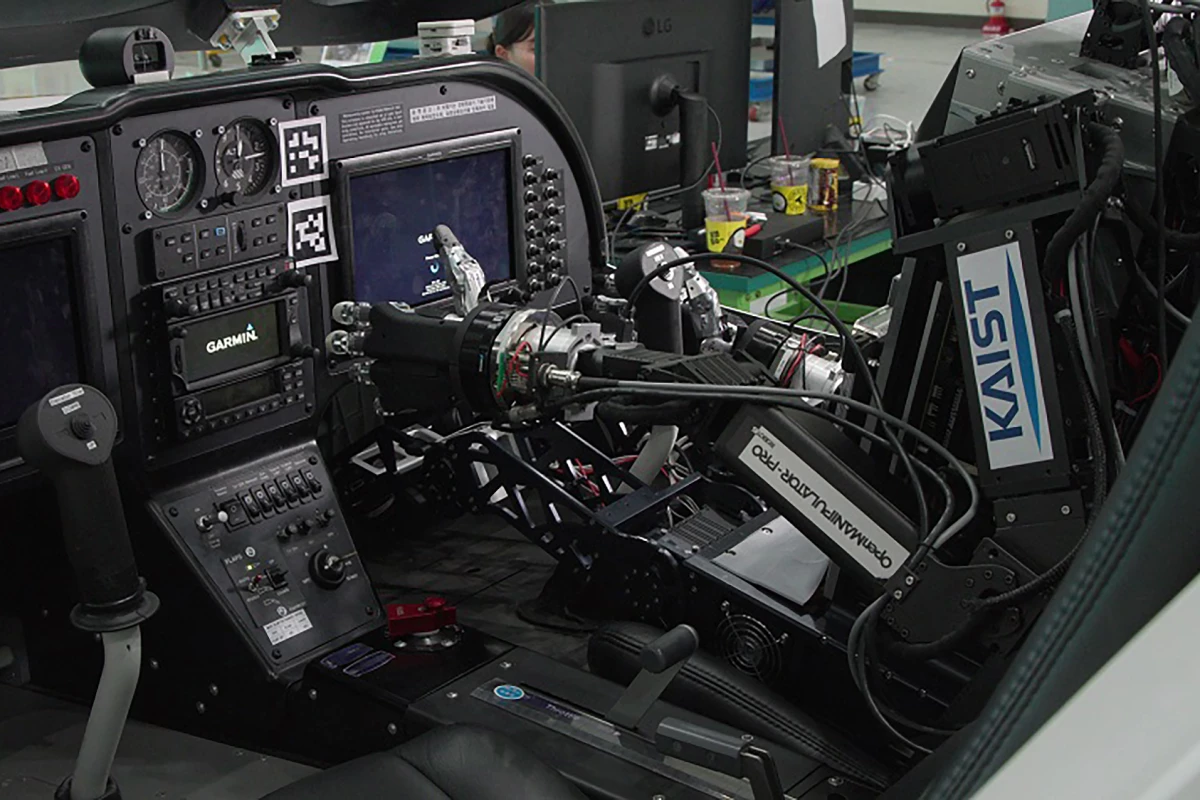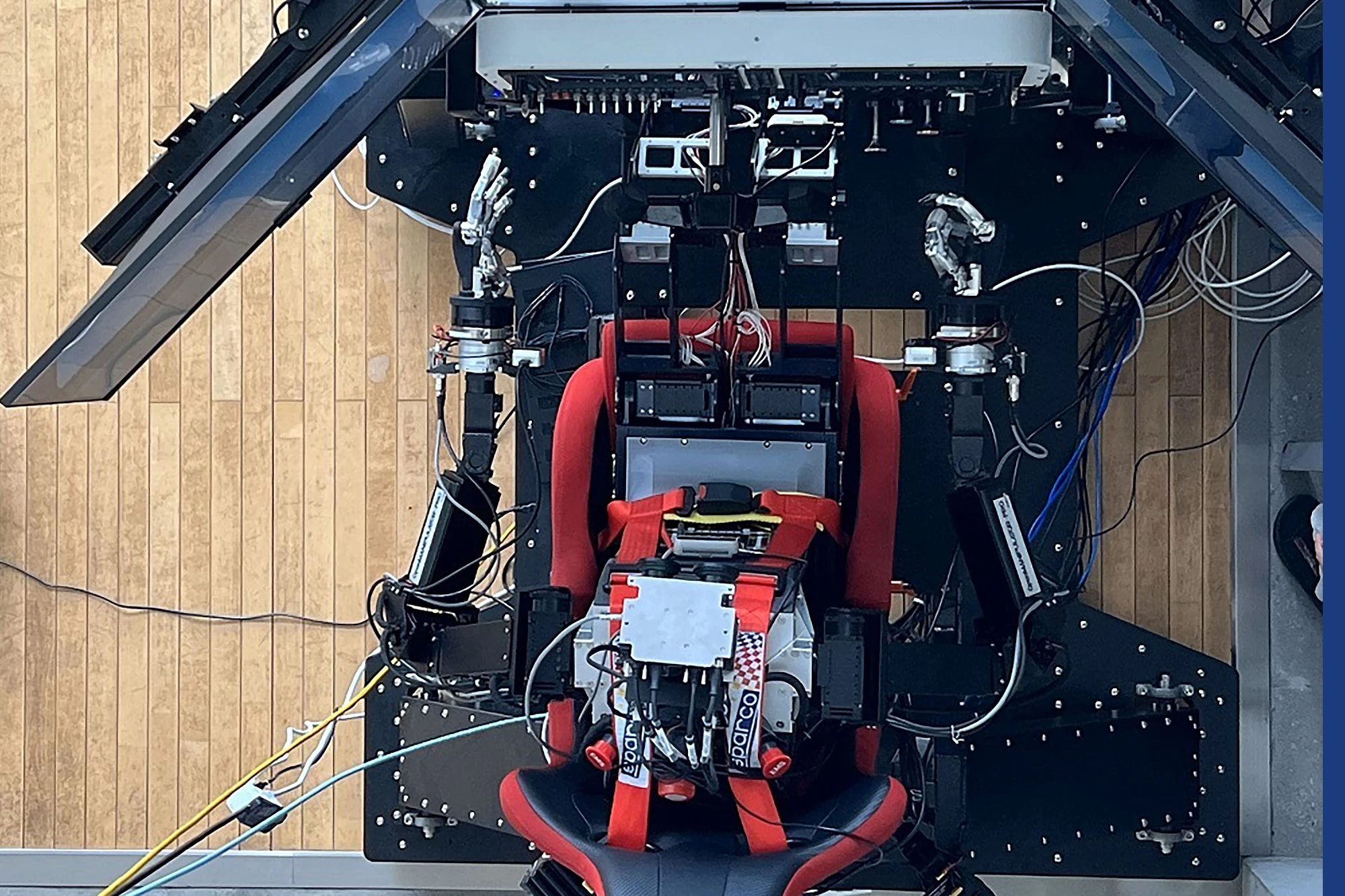A team of researchers has developed the world’s first humanoid robot pilot. As well as being able to slide easily into the pilot’s seat and use its hands to flip switches in the cockpit, the robot – called PIBOT – uses AI technology to memorize flight charts and emergency protocols.
There’ve been a number of robot pilots developed over the years. In 2016, DARPA’s Aircrew Labor In-Cockpit Automation System (ALIAS) accompanied a human pilot in performing some basic in-flight maneuvers. The following year saw ALIAS land a Boeing 737 using a simulator, and soon after, RE2 Robotics announced that it had been tapped by the US Air Force to develop the Common Aircraft Retrofit for Novel Autonomous Control (CARNAC) system, a drop-in robotic system designed to fly an unmodified aircraft. Then, in 2019, the ROBOpilot made its maiden two-hour flight.
The difference between these robot pilots and the one developed by researchers at the Korean Advanced Institute of Science and Technology (KAIST) is that PIBOT, the newest robot designed to fly a plane, uses AI technology and is a humanoid. It’s the humanoid part that makes it a world first.
“Humanoid robots do not require the modification of existing aircrafts and can be applied immediately to automated flights,” said David Hyunchul Shim, who is leading the PIBOT project. “They are, therefore, highly applicable and practical.”

In addition to being designed to physically sit in the pilot’s seat, the researchers say that incorporating ChatGPT technology provides PIBOT with a distinct advantage. It means the robot can remember Jeppesen aeronautical navigation charts from all over the world – something they point out is impossible for human pilots to do – and has memorized the Quick Reference Handbook (QRH), which contains all the procedures applicable to abnormal and emergency conditions such as a loss of electrical power or system malfunctions. They claim these abilities enable PIBOT to fly without error and respond to various situations quicker than human pilots.
Because it’s a humanoid robot, PIBOT can accurately manipulate the plane’s cockpit switches, even during harsh turbulence. Thanks to its embedded camera, the robot can analyze both the state of the cockpit and the outside environment.
PIBOT’s taxiing, takeoff, cruising, cycling and landing abilities have so far only been tested using a flight simulator, but the researchers plan to put the robot to the test in a real-life light aircraft soon. And they see uses for PIBOT other than just piloting planes.
“We expect them to be applied into various other vehicles like cars and military trucks since they can control a wide range of equipment,” Shim said. “They will … be particularly helpful in situations where military resources are severely depleted.”
The project is expected to be completed by 2026, at which time the researchers plan to commercialize PIBOT for both military and civilian use.
Source: KAIST






